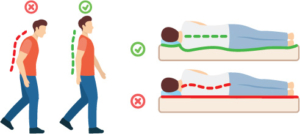Effective January 1, 2020 prior authorization from Optum/OrthoNet is required for all physical therapy, occupational therapy, and speech therapy providers as well as any provider type billing one of the below CPT codes for Humana Commercial, Medicare Advantage, and dual Medicare-Medicaid plan members:
420, 421, 422, 423, 424, 429, 430, 431, 432, 433, 434, 439, 440, 441, 442, 443, 444, 449, 92507, 92508, 92520, 92526, 92606, 92609, 92630, 92633, 97010, 97012, 97014, 97016, 97018, 97022, 97024, 97026, 97028, 97032, 97033, 97034, 97035, 97036, 97039, 97110, 97112, 97113, 97116, 97124, 97127, 97139, 97140, 97150, 97164, 97168, 97530, 97533, 97535, 97537, 97542, 97545, 97546, 97750, 97755, 97760, 97761, 97763, 97799, G0129, G0283, S9152, V5362, V5363, V5364
Physicians who have contracts with Humana to perform office-based physical, occupational or speech therapy and outpatient physical, occupational and speech therapy performed in a hospital will require Optum/OrthoNet prior authorization.
Inpatient rehabilitation, rehabilitation services performed in the home (including but not limited to those provided by a home health agency), services provided by chiropractors, and cardiac and pulmonary rehabilitation are excluded from Optum/OrthoNet management.
HTS Partners, see your Regional Director for helpful resources.
A Note from the field:
Many of our communities did not have news or much guidance about this new requirement prior to January 1st. Our Regional Directors report that partner clients were able to successfully fax in the information (per the request of Optum) and gain authorization for claims started after January 1st. If the claim originated in December and continued past January 1, 2020, a pre-auth is not required unless you anticipated the services extending past February 1, 2020.
Anthem Following in March:
Anthem has also merged with Optum/Ortho-Net and the prior-authorizations for Anthem Part B through the Optum site will be required starting March 1, 2020.
Please contact your HTS Regional Director for any questions and assistance.



